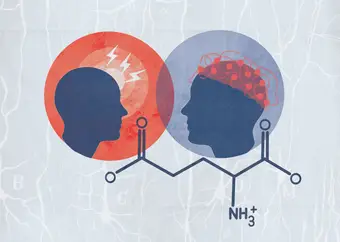Pain is a complex and subjective phenomenon — a warning alarm that lets a person know there is a threat to their body that must be addressed to maintain health and safety.
In response to noxious stimuli, such as damage to tissues or pain fibres, information is sent through the nervous system to the brain in a process known as nociception. According to UBC neuroscientists, pain is a complex and individual experience influenced by cognitive and emotional processes.
Researchers like PhD candidate in experimental medicine Jessica Archibald measure pain by assessing changes in the brain’s electrical activity using electroencephalography (EEG).
The experimental set-up involves placing electrodes on the participants scalp and applying different types of painful stimuli. The wave patterns on the EEG are then matched up to the pariticpants’ rating of the painful stimulus.
“We also use a scale from one to ten for subjects to measure pain, and the interesting thing is that something that you might give a nine, I may only give a four,” she said. “We see a lot of variability between subjects in terms of [electrical amplitude] even for the same noxious stimulus.”
This means the experience of pain is only partially determined by sensory input.
According to Dr. Kenneth Craig, professor emeritus of psychology at UBC and the director of the BC Pain Research Network, the experience of a painful event is not solely the result of the severity of the physical trauma.
“The remainder [of the pain experience] is probably accounted for by how one thinks and feels about it.”
He explained the experience of pain is very individualistic as a large part of it depends on how the person reacts to the pain. Research has suggested that one’s emotional state can influence the experience of pain, and data has suggested that factors like stress can exacerbate chronic pain.
UBC research is contributing to pain management and further understanding the phenomenon of pain.
Archibald’s research is focused on creating objective ways to measure and help people deal with pain. Glutamate, the primary excitatory neurotransmitter in pain signalling, is central to this goal, as are electrical responses in the brain.
An objective measure for pain could support the evaluation of pain management therapies to better support patients and help physicians discern pain experiences in those who have trouble communicating. It can also help researchers better understand the mechanisms driving pain and support the development of ways to manage it, according to one of Archibald’s papers.
An objective measure for pain can support the to better support patients and help physicians discern pain experiences in
Craig emphasized the importance of complimenting pain management with consideration for the patient as an individual.
“My own preference is to encourage pharmaceutical management, but to also pay attention to the psychological well-being of the individual and their experiences,” said Craig.
This article is part of The Ubyssey's neuroscience supplement, Big Brain Time. Pick up our latest print issue on campus to read the full supplement.
First online
Share this article








